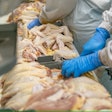
The Food and Drug Administration (FDA) released a food safety blueprint this week that highlighted the use of tech-enabled traceability and other smart tools in reducing the number of foodborne illnesses in the U.S.
The 10-year framework, the New Era of Smarter Food Safety Blueprint, builds on the Food Safety Modernization Act. The agency originally planned to release the blueprint in March but delayed the framework to focus on the COVID-19 public health emergency.
“In the months that have followed, it has become even clearer — from our experiences with the pandemic and the lessons we have been learning as part of the FDA’s response to it — just how essential the actions outlined in this blueprint are and, if anything, that they are more important now, than ever,” Stephen M. Hahn, M.D., the Commissioner of Food and Drugs at the FDA, said in a statement.
More than 48 million Americans get sick from a foodborne illness each year and 3,000 people die as a result, the Center for Disease Control and Prevention (CDC) estimates. Contaminated poultry meat is the underlying cause of 19% of deaths attributed to foodborne illnesses.
Blockchain and other digital tracing methods
Emerging digital technologies – such as blockchain – help track and trace food products throughout the supply chain, from farm to fork. Food safety experts can use this information for faster identification of the source of foodborne illnesses.
“One of the challenges we’ve faced over the years is recurring outbreaks of illnesses associated with the consumption of certain foods,” said Hahn. “What this daunting problem underscores is the critical importance of the FDA working with industry so that we can rapidly trace a contaminated food to its source. And when I say rapidly, I mean minutes, not days, weeks or even longer.”
The framework also emphasizes the “power of data” to make food production safer. New tools and approaches for analyzing big data could help predict – and even prevent – disease outbreaks.
Industry reactions
Leslie G. Sarasin, president and chief executive officer, FMI – The Food Industry Association, said, “On behalf of the retailers, wholesalers, product suppliers and other stakeholders within the FMI membership, I thank FDA for its leadership in designing a plan that creates a more digital, traceable and safer food system. We look forward to working with the agency on the implementation of its Smarter Food Safety plan.”
Like what you just read? Sign up now for free to receive the Poultry Future Newsletter

















